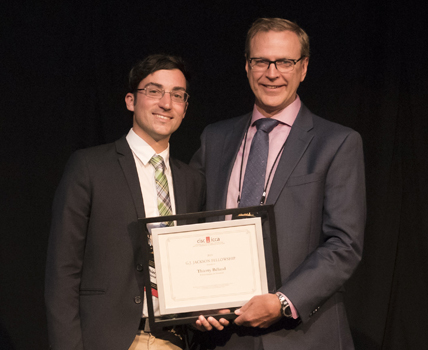The general objectives of Thierry’s research project are to evaluate the contribution of the gravity framing in the seismic resistance of conventional constructions and its influence on the seismic behaviour of multi-storey Conventional Construction (Type CC) steel braced framed buildings; and to improve that contribution by using simple yet ductile top and seat angle beam-to-column connections in the gravity frame. More specifically, Thierry identifies the following goals of his study:
a. Investigate experimentally the influence of geometrical and material parameters on the seismic behaviour and capacity of partially restrained beam-to-column connections built with bolted top and seat angles;
b. Develop design guidelines for the seismic design of partially restrained beam-to-column connections built with bolted top and seat angles;
c. Investigate experimentally the influence of geometrical and material parameters on the seismic capacity of typical column base plates connections;
d. Develop numerical models that can reproduce accurately and efficiently the complex nonlinear cyclic response of the beam-to-column and column base connections;
e. Perform numerical simulations to assess the contribution of the gravity system to the seismic resistance and performance of multi-storey braced frames buildings having different heights and geometry;
f. Examine the possibility of relaxing current code height limits, analysis requirements, and amplified design seismic loads for Type CC systems designed with a gravity frame exhibiting enhanced lateral strength and ductility.
The outcomes of this project are expected to result in simpler and cost effective Type CC steel frames.
WHERE ARE THEY NOW?
View Thierry Béland‘s LinkedIn Profile.


